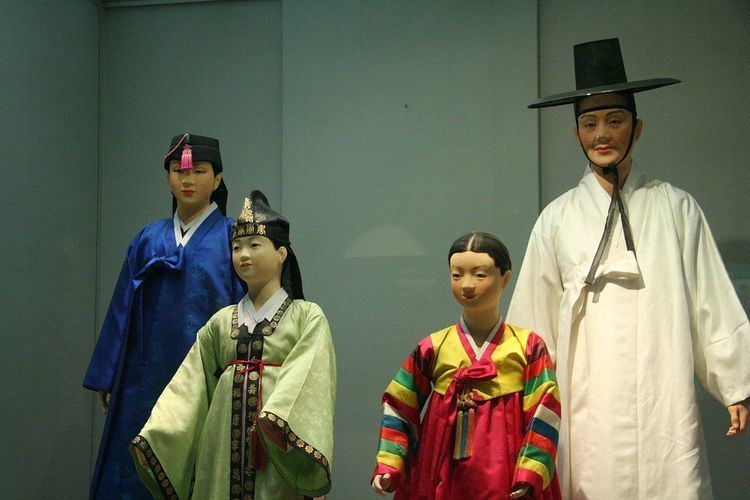Hangul 두루마기· 주막의· 주차의· 주의 | Hanja none· 周莫衣· 周遮衣· 周衣 | |
 | ||
Revised Romanization durumagi / jumagui / juchaui / juui McCune–Reischauer turumagi / chumagi / chuch'ai / chui | ||
Durumagi is a variety of po, or overcoat in hanbok, the Korean traditional garment. It is usually the topmost layer of clothing that is worn over jeogori (jacket) and baji (pants). Durumagi means "closed all around", and is also known as jumagui (주막의, 周莫衣), juchaui (주차의, 周遮衣) or juui ( 주의, 周衣). Durumagi is worn not only to fend off the cold, but also for ceremonial purposes.
Contents
History
The origin of durumagi traces back to at least the Goguryeo period, although Mongolian influence during the Goryeo period caused changes in its appearance. Not only was the waist belt changed into a [hanbok|goreum], the traditional po's short length and wide sleeves were lengthened and narrowed to the style of the Mongolian coat xurumakci, of which the name durumagi is said to be derived.
During the Joseon Dynasty, the durumagi was less worn as an overcoat but more of a housecoat for the noble class, whereas it was worn outdoors by the commoners. In 1884, King Gojong promulgated the unification of clothing for all social classes through reform laws. However, this law was met with much resistance and it was only until ten years later, after the Gabo Reform of 1894, that the durumagi became common as formal attire.
Types and characteristics
Different fabrics and materials are used in making durumagi: calico, wool, cotton, and various silks for winter; ramie, fine ramie and silk gauze for summer; various silks and calico for spring and autumn. White, grey and navy blue are commonly used.
Various types include hotedan durumagi (홑단 두루마기, single layer), gyup durumagi (겹두루마기, double layer), som durumagi (솜두루마기, cotton), and kkachi durumagi (까치두루마기, magpie) or obangjang durumagi (오방장 두루마기, five colors) for children.
Modern use
The 'durumagi' is still considered an important part of traditional attire for formal occasions, but a variety of colors and designs are being used. Colorful durumagis were given as gifts to the world leaders of the 2005 APEC Summit in Busan.
